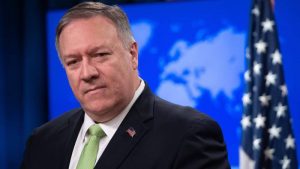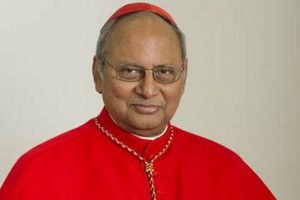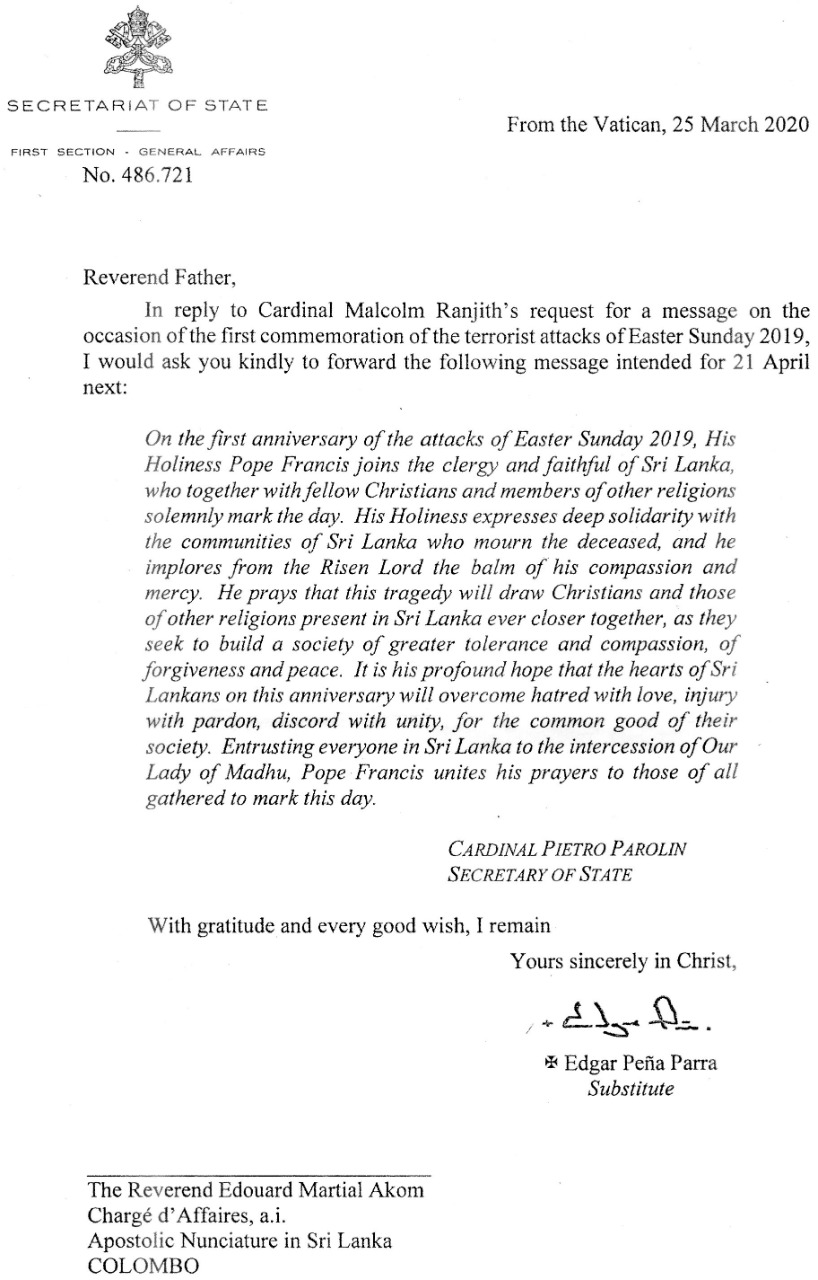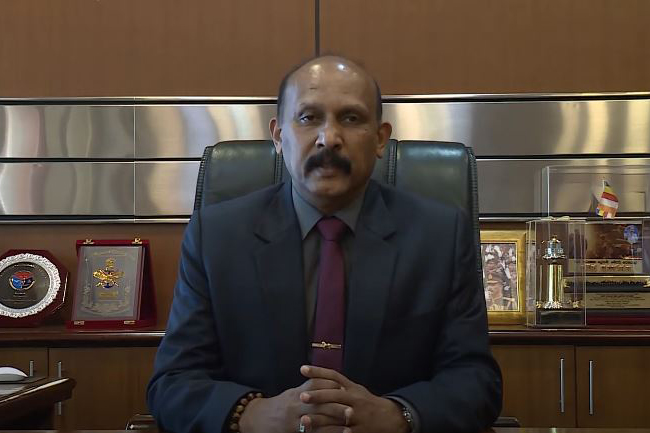By : A.A.M.NIZAM – MATARA
Continuing with his opinions the diaspora proxy Sumanthiran said that the COVID-19 threat could last for several months, if not a year or two. In such a context, it is absolutely essential that all arms of government function effectively to meet this threat. Parliament must immediately deal with the question of laws needed to meet the new threat. Even if the State of Emergency is declared by the President under the Public Security Ordinance, that must be approved by Parliament. Previously during the period of war, Parliament met under Article 70(7) to extend Emergency. If Emergency Regulations are promulgated, they must be laid before Parliament without delay…
Referring to North and East he said that the situation in the North and the East is precarious at the moment and some people are nearing starvation. Local authorities are the best-equipped bodies to deal with this situation are not being allowed to uplift the funds they have saved and kept precisely for situations like this! I have spoken to the Governor of the North while R. Sampanthan had spoken to the Governor of the Eastern province, but so far, they have not granted their consent. Either the government must grant relief to the most vulnerable sections or at least allow the local government institutions to do that. He said that the local authorities in the North and East have emergency funds in fixed deposits for situations such as this. However, they need the concurrence of the Commissioner for Local Government (CLG) to uplift or withdraw them. So far, the Governors of both provinces have refused to permit the CLGs to uplift those funds.
The prat-fallen Janatha Vikurthi Peramuna too has opposed holding of elections and it is merely in fear that their popularity percentage will further decrease if elections are held. The leader of this Vikurthi Peramuna who is now called Mr. 3% has called EC head for an appointment to discuss the polls. A former MP of this outfit Bimal (Biyagulu) Ratnayake has said that the government must not use the election in South Korea as an excuse for holding the parliamentary polls before the COVID-19 crisis was over. He has said that the South Korean health authorities have issued a fresh warning that the next two weeks would be crucial after their election on April 15. So those who speak of holding elections, talking of the Korean experience, should take all factors that prevailed during the elections in that country should take into consideration,” he has said.
Meanwhile, Prime Minister Mr. Mahinda Rajapaksa has issued a comprehensive message covering the Corona Virus situation in the country. Steps being taken by the government to control the spread of the epidemic and on the success that has been achieved, the sabotage being made by the opposition to curtail food, essential items, and medicine distribution, and on the election phobia of the opposition,
The prime minister says that the Coronavirus pandemic hit countries like the USA, India, and Bangladesh in a situation where their economies had been experiencing strong growth for years. In contrast, Sri Lanka has had to face this crisis in a state of economic ruin. During the five years of yahapalana misrule from 2015 to 2019, our debt burden increased by 71%, the Rupee lost one-third of its value and economic growth had plummeted to 2.7%. Furthermore, though we had won the presidency in November 2019 and formed a government, we did not have a majority in Parliament and were not able to get a vote on account passed even to pay off the previous government’s debts to suppliers of fertilizer and medicine.
The
financial powers vested in the President under Article 150(3) of the Constitution
were the only saving grace in this situation. It was with all these
debilitating disadvantages that we had to face the Coronavirus pandemic.
The
Prime Minister explains that after the first Coronavirus patient was discovered
on 11 March, we introduced a raft of measures to control the disease including early
detection, isolation treatment of patients, quarantine for those exposed to
risk, the tracing of patients’ contacts and social distancing measures. An
operation like this has not been seen in our lifetimes. Curfews lasting for
weeks on end had to be imposed to prevent the spread of the disease.
He states that people unable to go out of their homes had to be supplied with essentials like foodstuffs, medicines, and even cash throughout the country. Aid had to be provided to low-income earners. The produce of paddy and vegetable farmers and fishermen had to be bought to keep the production process going on. The fact that all these tasks were dealt with simultaneously at short notice is nothing less than a managerial miracle and today, the whole world acknowledges Sri Lanka’s success in containing the coronavirus pandemic.
Commenting with gratitude about the contributions made and being made by our public officials he says that the President’s leadership in this regard has to be commended. Our government doctors, nurses, and health service workers have come to the attention of the entire world. The skill and dedication of the intelligence services in tracing the contacts of patients, the efficiency of the armed forces in implementing quarantine and lockdown measures have prevented the spread of the disease. The Police and government officials at all levels have all contributed to the success of the anti-Coronavirus campaign. Today, our country is one of the safest places to be in the whole world. We have achieved this despite an economy that had been driven into the ground, and an unpatriotic and opportunistic opposition bent on undermining our government at every turn.
The Prime
Minister claims with disdain that the opposition leader tried to sabotage the
anti-coronavirus campaign at the very outset by personally encouraging protests
against the quarantine process. Then they tried to undermine government
services including the health service with the argument that the President had
no power to allocate funds for government services after the dissolution of
Parliament and now they say that the Gazette dissolving Parliament should be
rescinded the as the new parliament has to meet before the 2nd of
June, and the parliamentary election cannot be held before that.
He reminds us that the yahapalana government delayed local government elections by nearly three years. Their attempt to postpone that election indefinitely by moving courts failed only because the Elections Commission declared they would hold elections to the institutions that were not involved in litigation. With just days to go for the dissolution of the provincial councils in 2017, the yahapalana government changed the provincial councils’ elections system to prevent elections from taking place. When the Attorney General held that a two-thirds majority in Parliament was required to pass that amendment, they bartered policy for votes in the corridors of Parliament to obtain the required majority.
As a result of that unprincipled political horse-trading, the local government elections law which was passed on 25 August 2017 has 40% proportional representation whereas the provincial councils’ elections law passed four weeks later has 50% proportional representation! Sri Lanka is also the only democratic country in the world where political parties petitioned the Supreme Court to get the declaration of a parliamentary election annulled. The present scramble to have the parliamentary elections put off is a continuation of that deplorable past.
The Prime Minister emphasizes that things have to come back to normal sooner or later and in eleven of the 25 administrative districts, there have been no coronavirus patients at all. In another seven districts, there have been only one or two patients and five to seven patients in two more districts. Only five districts have a high incidence of coronavirus patients.
In the conclusion of the message, the Prime Minister explains that on 2 March the President dissolved Parliament and fixed 25 April for the poll and 14 May for the first meeting of the new Parliament. Ten days later, when the first Coronavirus patient was found, the President did not have the power to postpone the poll. Under Section 24(3) of the Parliamentary Elections Act No: 1 of 1981, when the poll cannot be held on the day fixed by the President, the Elections Commission is mandatorily required to fix another day for the poll. They have no power to postpone the poll without fixing another date. Such mandatory legal requirements cannot be ignored on the basis of speculation as to what may or may not happen weeks and months into the future. The Elections Commission should first fulfill its duties under Section 24(3) and thereafter take up for discussion any outstanding issues.
Infuriated and dismayed by the above-referenced statement of the Prime Minister which binds the Election Commission with no room to allow SJBandits and their cohorts to play around and demand further for postponement of elections, force the EC to attend to their constitutional responsibility, the SJBandits have issued a statement-making various baseless, illusory and fanciful allegations completely forgetting the hardships forced upon the people by the Sirisena/Ranil regime in which the SJBandits and their cohorts were the kingmakers.
The
very first and horrendous act by the despicable regime was quisling Mangala
Samaraweera blindly co-sponsoring the American initiated UNHRC resolution No.
30/1 without the consent of the President and without informing the Cabinet of
Ministers. This nincompoop didn’t care that the said resolution was
inconsistent with our constitution and it violated the sovereign rights of our
country. What he wanted was to be in the
good book of the Amer4icans.
Their
ravage activities during the 4 ½ years of Black Rule in the country included unprecedented
corruptions and gross misuse of power practiced by them on a level never seen
in any country in the world, which included
sale of valuable national assets and making arrangements to sell all Sri Lankan
assets and subjecting several future generations to slavery under foreign
countries, allowing the terrorist diaspora elements and despicable tyrant
western nations cabal to witch hunt our gallant war heroes and national
liberators and imprison them and
enacting legislations to hand them over to war crime tribunals, depriving
pension rights and disability allowances for disabled war heroes and forcing
them to spend days and days in front of Fort Railway Station and shuttle to and
fro the Presidential Secretariat, completely
denying the liberty for our war heroes to travel abroad, officially robbing
from the Tils in the Temples which had never happened in the 3,000 year old history of Sri Lanka,
arrest and imprisonment of joint opposition politions, their family members and
supporters and even much venerated Buddhist priests and holding tjhem in remand
prison for several months on cocked up charges, allowing the racists in the
North to destroy ancient archeological sites and prevent any new settlements
there and even deny carrying out of funeral rights of Buddhist priests in that
part of that country , MPs poisoning the innocent participants of opposition
rallies by distributing poisoned milk packets, making Sri Lanka second only to
Mexico in consumption, distribution of drugs and allowing drug peddlers to sell
drugs and narcotics freely to school children, Ministers and MPs of the
government without any hesitation and shame demanding huge commissions from contractors
and potential foreign investor, suspending work on all ongoing projects
launched by Mahinda Rajapaksa government and thereby de-employing and
retrenching from work several thousand innocent persons, until they were forced to recommence work on
these projects following demands for huge amounts of compensations were
demanded by the foreign partners of the said projects.
The
Speaker of Parliament contrary to the much respected and admirable
personalities who hel this hallowed office in the past, allegedly was the worst
Speaker ever had by Sri Lanka who appointed the leader of a minority party in
the opposition as the Leader of the Opposition, a leader of a party that had
only 6 MPs in the parliament as the Chief Opposition Whip, and making this
individual a member of the Special Advisory Committee functioned from Prime Minister’s
Office and allocating most of the debating time reserved for opposition was
allocated to this individual and severely restricted debate times for the joint
opposition and continuously and arrogantly interrupted the speeches of the
joint opposition members and made the parliament similar to a fish market, government MPs brought weapons
to parliament with the reported concurrence of the worst Speaker and when it
was reported to him his response was that he doesn’t mind even if one or two
murders take place in the parliament, this overtly biased Speaker misused his powers
and made political appointments to the so-called independent commissions and
Parliament Committees – For instance appointment of vicious Tamil separatist
Ranjan B.Hoole as a member of the Election Commission, terrorist proxy
Sumanthiran as the Chairman of the Higher Posts Approval Committee and so on.
They
deliberately ignored credible foreign intelligence reports about the Easter
Sunday suicide bomb attacks, sharing the information only with Ministers and
government MPs and thereby causing the death of over 500 innocent people and
injuring a similar number of whom some are still undergoing treatment, taking
no action against a government Minister who has held discussions with the main
suicide bomber and who has made a hospital visit to see the brother of the main
suicide bomber as it had been shown in several video clips, adopting the
Horaage ammagen pena ahanawaa” (seeking divine revelation from the mother of
the thief) appointing this alleged Minister as a member of the Parliamentary
Select Committee appointed to
investigate on the Easter Sunday Carnage
Even many of them who entered Parliament as bicycle politicians wearing rubber slippers got infected with back pains and wanted to have super luxury vehicles worth several hundred million dollars and even for the travel of their spouses. If they have continued to be the members of parliament further they may have even requested personal helicopters. They were receiving millions of rupees as various allowances which included attendance allowance, office maintaining allowance for Colombo and the same for their electorates, in addition to various other perks and privileges.
Some of these bicycles and betel and laveria seller politicians became big businessmen and business partners of major companies. Many of them were well-known drug peddlers and wine shop owners. When the import of drugs was found in containers that brought other goods to State institutions no investigations were carried out to take legal actions against those responsible.
They ruined the agriculture sector, suspended the fertilizer subsidy and encouraged the paddy farmers to grow maize or other crops or fill the paddy lands and sell them for building/house construction. Cultivators of pepper, cinnamon, and tea were made paupers by importing low-grade qualities from Vietnam, Kenya, and some other countries and exporting adulterated products and gaining he profits while depleting the prices for the local products drastically.
Nepotism
and political favoritism reigned high.
Several Ministers filled their Ministries and the departments under
their Ministries with their spouses, paramours, siblings, and even distant
relations. They included Lakshman
kiriella, Arjuna Ranatunga, Rishad Bathiudeen, Rauf Hakeem, etc.
Promises made in the budgets were never implemented. Dreams held by A/L students to get personal Tabs passed as bad dreams. One thing they encouraged was creating boozers in the country. Mangala Samaraweera even attempted to sell liquor to women, employ girls in night clubs and Bars and keep Wine Shops opened on Poya and other Holidays. He said that keeping these shops closed on holidays deprives the freedom of foreign tourists.
People
were made to lose the trust they held in our Courts and the judicial system.
Ranjan Ramanayake’s recorded tapes vividly expose how politically motivated
cases were filed, how judges were threatened and were forced to spin their
judgments etc.
When the presidential election was to be announced, probably getting the information from their proxy Hoole in the EC, many Ministers made quick appointments in Departments and Corporation coming under their Ministries. Only such appointments in the Kallathoni descendant Ganeshan Ministry and National Savings Bank under the Finance ministry got suspended/cancelled by the EC due to delays caused by delay in issuing appointment letters. In addition to this, there were several hundred people getting salaries without work from Sajith Premadasa’s Ministry (appointed on the basis security if tall and labourer if short”) and nearly one hundred persons as road construction including some Buddhist monks from Kiriella’s Highways Ministry.
Plantation
laborers were made to stage demonstrations demanding salary increases for
several months and many disgruntled plantation youths left the Estates for
labor jobs in Colombo and other towns..
University
students and their parents who joined in their demonstrations presenting
reasonable and justifiable demands and who are destined to be our future
leaders, doctors, engineers, scientists, professionals and administrators were
inhumanly harassed, beaten, subjected to high pressure water cannon assaults,
tear gassed and many were hospitalized with severe injuries. These assaults
were carried out on the insistence of certain prominent rogue Ministers.
The government was completely appeasing the Sambandan/Sumanthiran cabal. Several Bills were passed pleasing this duo fulfilling the commitments that had been made under UNHRC resolution 30/1. Sometimes people were even wondering whether these two vagabonds were the President and the Prime Minister of this country. Video clips on Parliamentary proceedings showed once Sumanthiran walking up to the Leader of the House Lakshman Kiriella and strongly instructing him on certain things and the Ministers and government MPs staying ‘bakan nilagena’ (nikan valaafena – just watching motionless. The only thing these racist duos could not get achieved was to get a new constitution, a federal and secular constitution adopting repealing the existing constitution although the draft was ready and that was because to adopt a new constitution it is mandatory to have it approved with a two-thirds majority in Parliament followed by a referendum. However, they would have made an alternate arrangement and got it approved similar to what they did in respect of postponing the provincial council elections if parliament was not dissolved early by the idealistic President.
These are some of the misdeeds carried out by the previous government and those who were mainly responsible for these acts are now in the fold of Shameless Jabbering Bandits (SJB) group and among their cohort. Most of them are uncertain of returning to Parliament from the ensuing elections and suffering from an acute election phobia and hence desperately attempting to reconvene the parliament to complete its full term and become eligible for pension rights.
Sunday Times Political Editor revealed in his column week that Basil Rajapaksa, General Secretary of the ruling Sri Lanka Podujana Nidhas Sandanaya, told them that he doesn’t want to comment on the parliamentary elections as it is a matter for the Election Commission. However, he was surprised by the position taken by some parties which had earlier introduced legislation to put off Provincial Council elections. They also periodically put off local government elections. He has further stated that these parties they fear for elections know that the government has ensured almost near normalcy on the virus situation. Referring to South Korea, he has pointed out that they held elections there and the turn out despite their being affected badly by the Covid-19 pandemic was more than their previous poll.
The news item stated that Mr. Basil Rajapaksa recently told Election Commission Chairman Deshapriya to avoid resorting to any action that would institutionalize the present stalemate” and then blame them for the situation.” In other words, the news item explained the President’s Special Envoy was making clear that an indefinite delay in the conduct of a parliamentary election would mean the indefinite continuance of the Presidency without an elected government and it means no Parliament and priority matters like amendments to the constitution will then be difficult. In this setting, some Buddhist prelates have even said that President Rajapaksa should continue in office without worrying about elections.
The strong messages are given to Deshapriya by the Prime Minister and after that Mr. Basil Rajapaksa have put him in an awkward position unable to dodge anymore despite reluctance from the pro-separatist and racist member in the Commission Ratnajeevan Hoole and forced him to hold discussions with health authorities, security services, district administrators who will act as returning officers and issue a gazette notification announcing a new date for holding the elections.
Fortunately, we will now be electing a new government on Saturday 20th June. I hope it will be a government with a two third majority and only such a government will be able to reverse many of the damages that had been caused by the so-called yamapaalana government during the 4 ½ years of Black Rule.


















